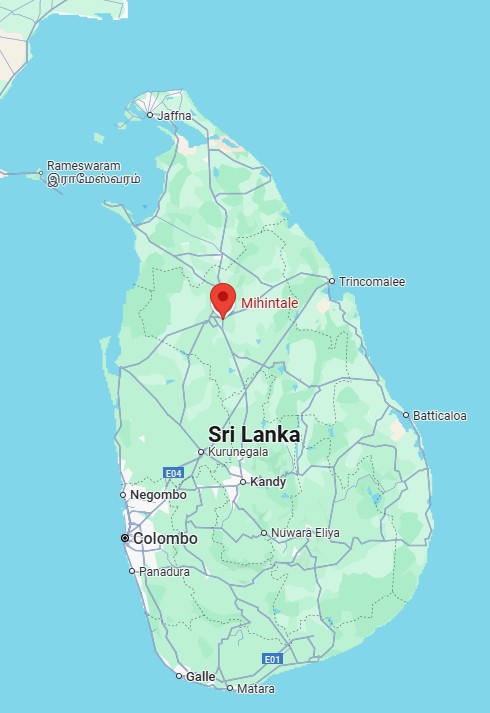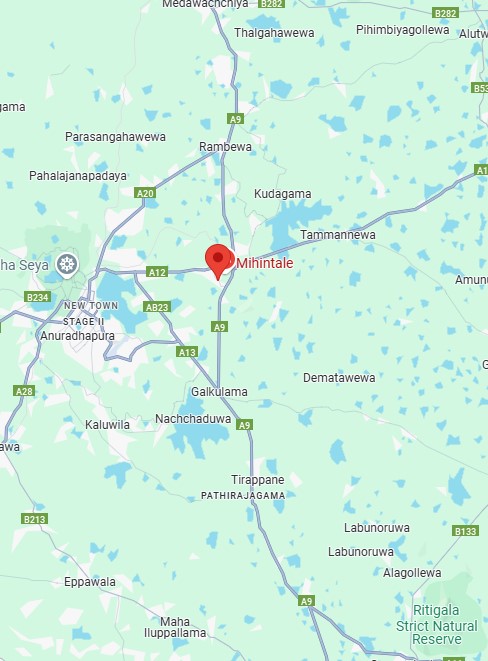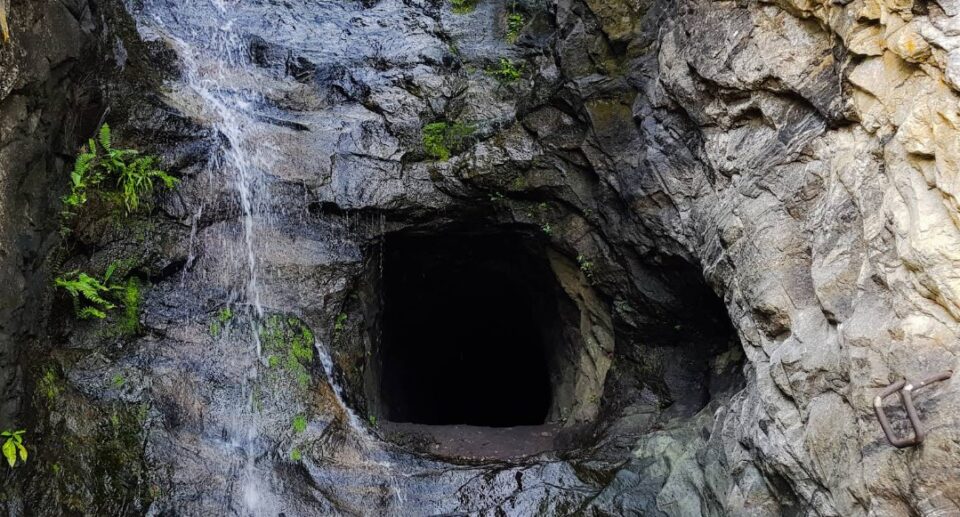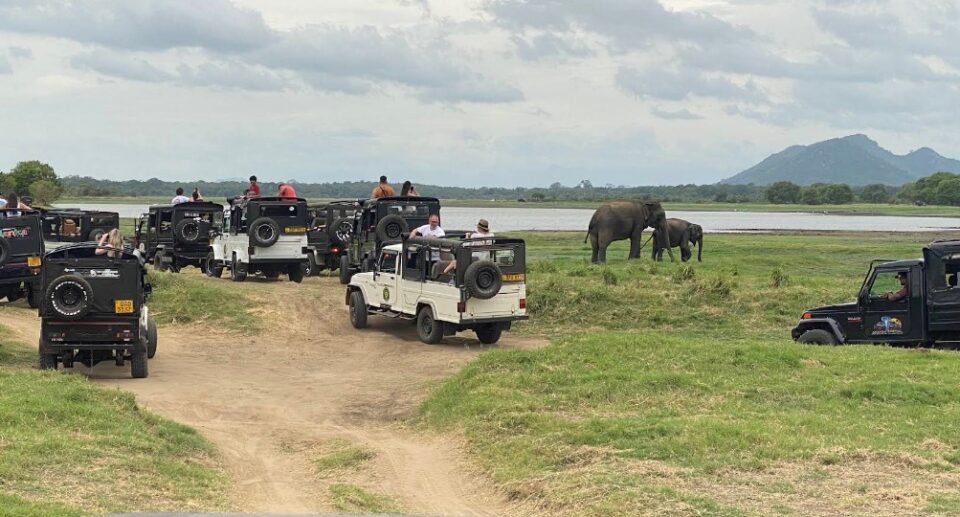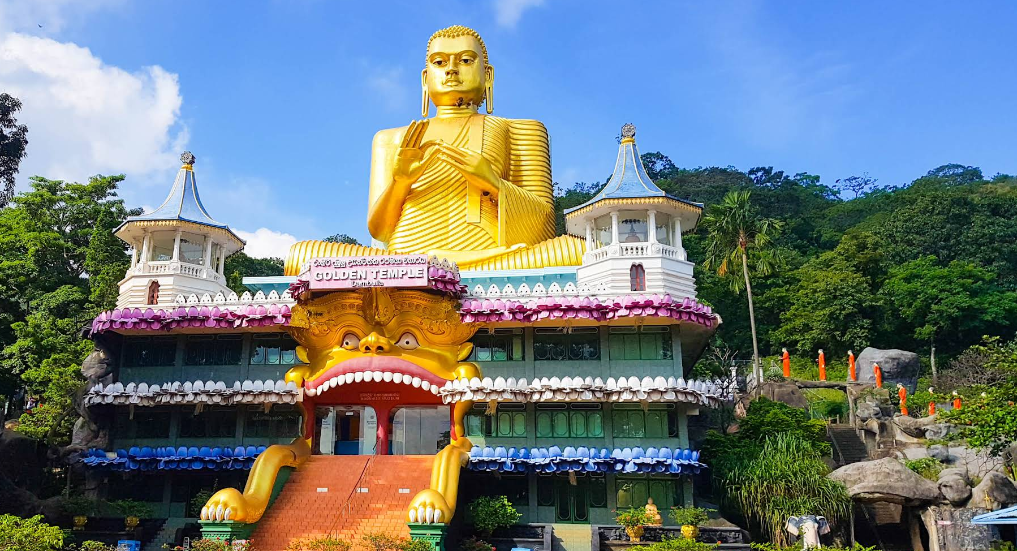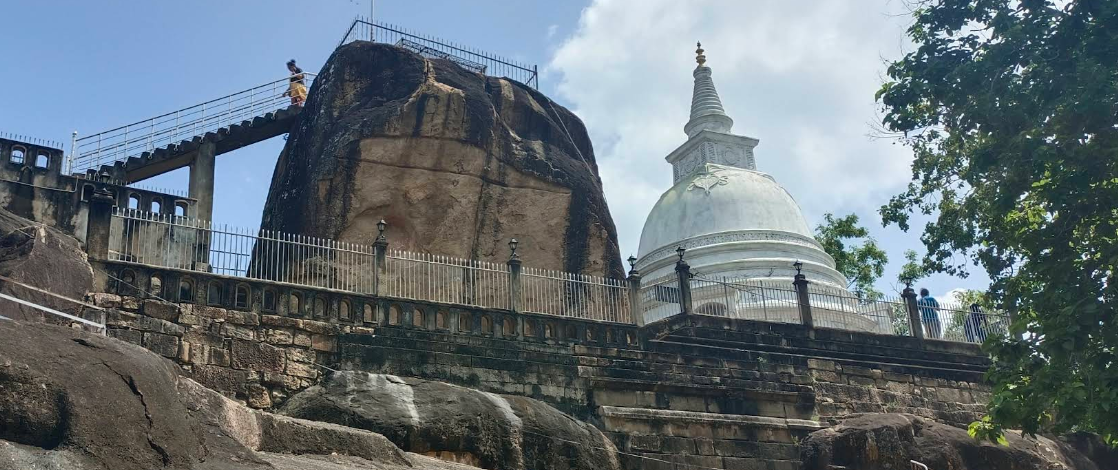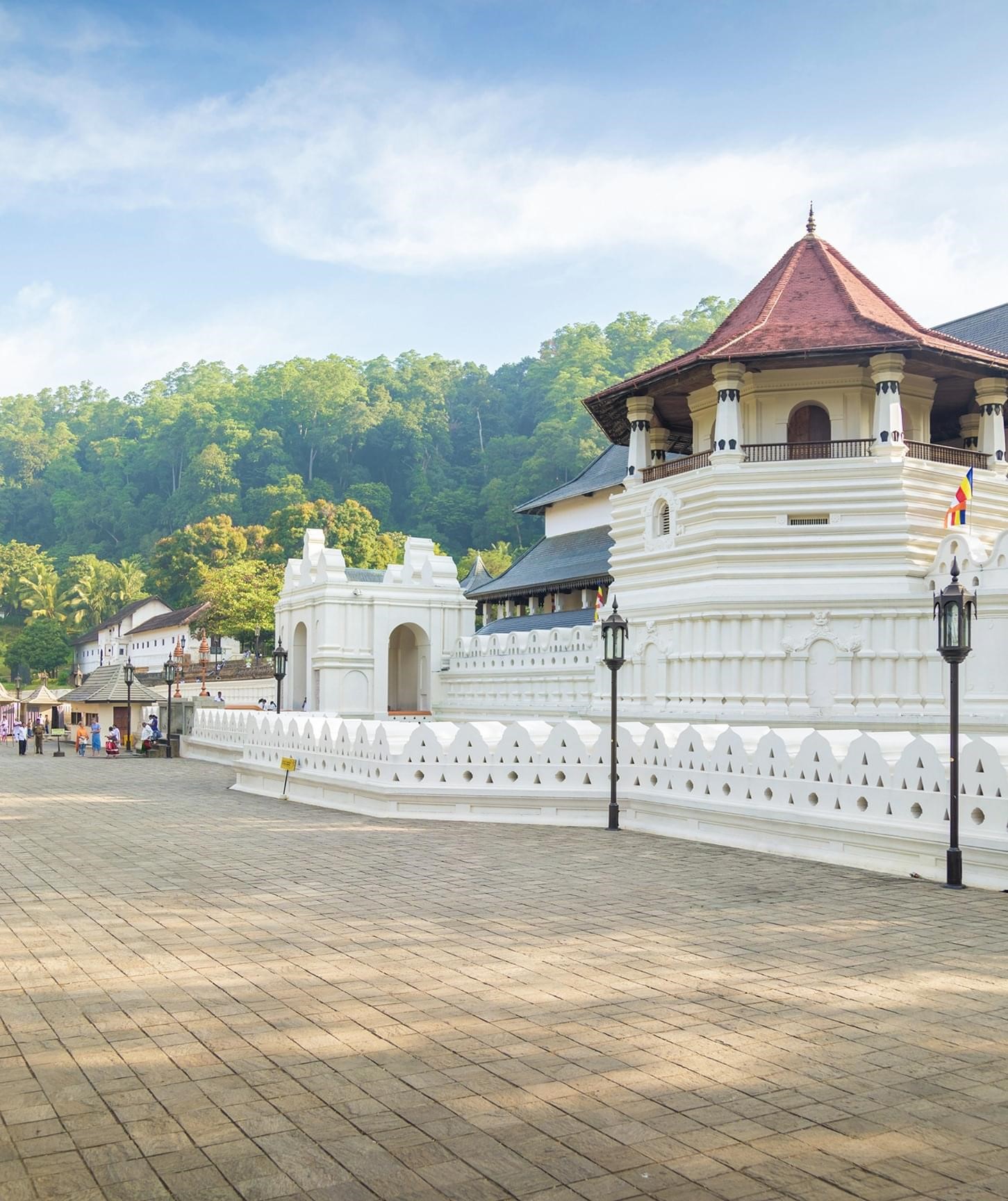Mihintale: The Sacred Cradle of Buddhism in Sri Lanka

Mihintale, just 15 kilometers east of Anuradhapura in the North Central Province of Sri Lanka, is a location near the heart of the country. It is more than just an old archaeological site; Mihintale is the accepted birthplace of Sri Lankan Buddhism. As a religious pilgrimage site, this mountain peak and its surroundings symbolize the spiritual awakening of a civilization and are a living testament to the island’s religious and cultural heritage.
With its mixture of history and myth, serene landscapes, and ageless ruins, Mihintale is a potent symbol of Sri Lanka’s Buddhist legacy. This essay examines Mihintale’s beginnings, religious and cultural importance, key landmarks, and its position in the spiritual and historical topography of Sri Lanka.
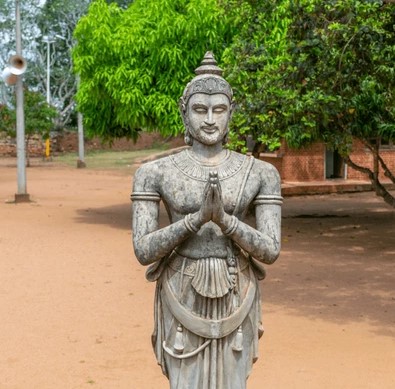
The Historical Origins of Mihintale
Mihintale’s most robust claim to fame is its historical significance as the location where Buddhism was brought to Sri Lanka. The Mahavamsa, the Sri Lankan ancient chronicle of history, dates the milestone event to 247 BCE, during the reign of King Devanampiyatissa.
The king was on a hunting excursion on the hills of Mihintale when he encountered Arahant Mahinda, the son of Indian Emperor Ashoka, who had come from India as a Buddhist missionary. Not only is their meeting more than legend; it is a historic turning point in the island’s history. The wisdom and openness of the king were challenged by Mahinda with a philosophical riddle. Struck by the intelligence and modesty of the king, Mahinda preached the Chulahatthipadopama Sutta, and the king was converted.
What followed was not merely a personal religious conversion, but a national one. Buddhism spread rapidly across the island, reaching art, architecture, statecraft, education, and everyday life. Monasteries and temples proliferated, and Mihintale developed into one of the earliest monastic complexes in Sri Lanka.
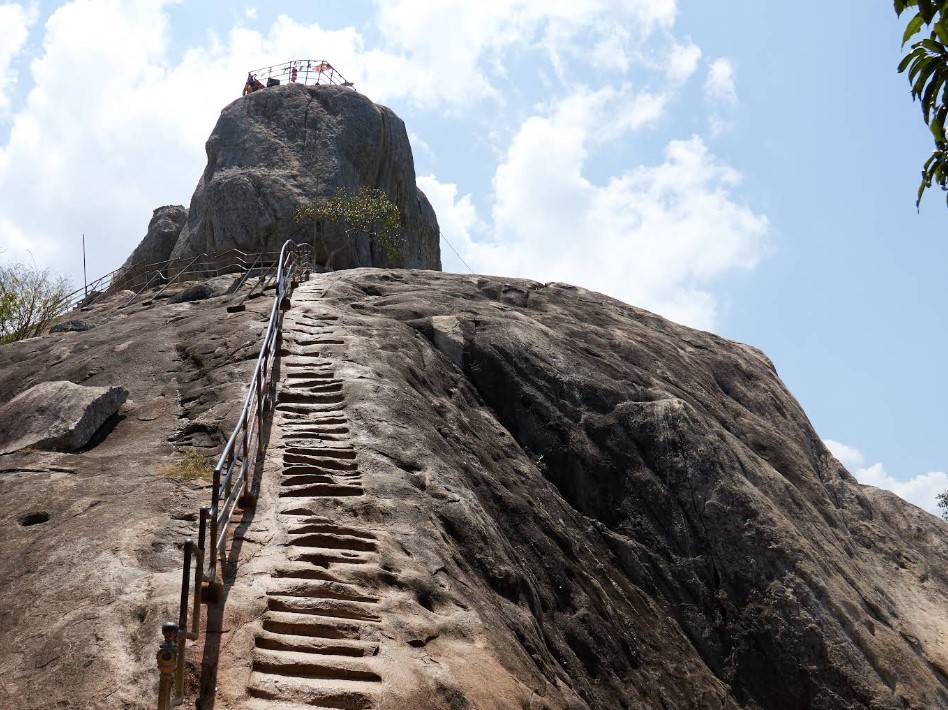
Spiritual Significance and Pilgrimage
Mihintale is now a holy site of pilgrimage for Buddhists throughout Sri Lanka and elsewhere. Pilgrims numbering thousands flock to the site every year, particularly for Poson Poya in June, commemorating Mahinda’s arrival. The festivities are marked by candlelight processions, alms-giving, chanting, and meditative walks, recreating the spiritual atmosphere of that meeting so many centuries ago.
Pilgrims ascend a majestic granite staircase of 1,840 steps to the summit of Mihintale Hill. Along the ascent, they pass by monastic ruins, stupas, statues, and rock inscriptions, each bearing some chapter of Sri Lanka’s religious past.
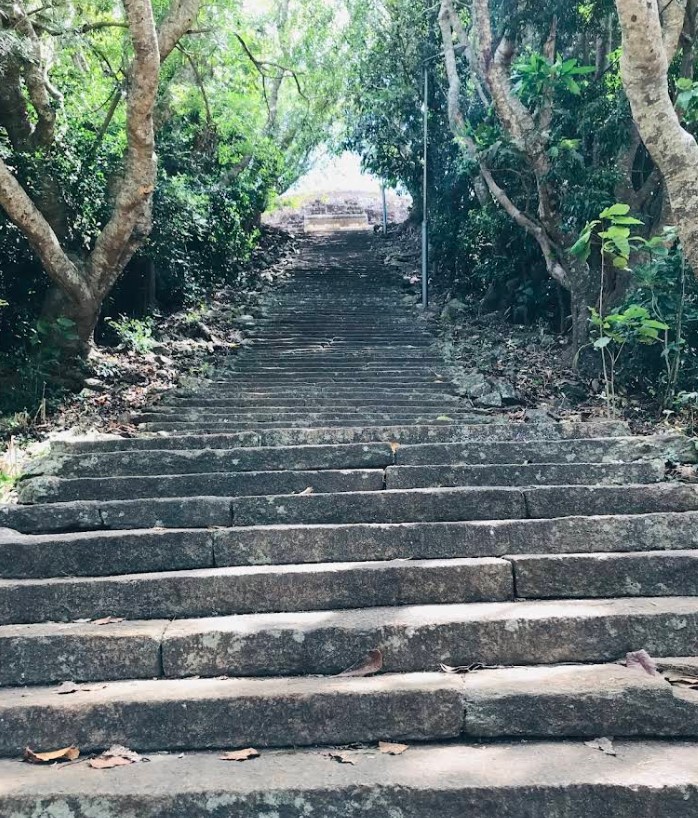
Mihintale is as much a place of spiritual awakening as of contemplation, unity, and peace. The surrounding nature—a mix of forest cover, rocky outcrops, and open plains—invites the visitor to contemplation and serenity, making Mihintale a religious and meditative place.
Key Landmarks and Buildings
Mihintale is more than a mountain. It is a large complex of centuries-old religious and architectural wonders. Some of the greatest attractions include:
- Aradhana Gala (The Rock of Invitation)
This is identified as the very location where Mahinda preached to King Devanampiyatissa for the first time. Aradhana Gala ascent offers a spiritual experience and breathtaking panoramic views of the forests and plains below. Pilgrims sit on this rock in silent prayer, sensing a connection to the divine event purported to have occurred there.
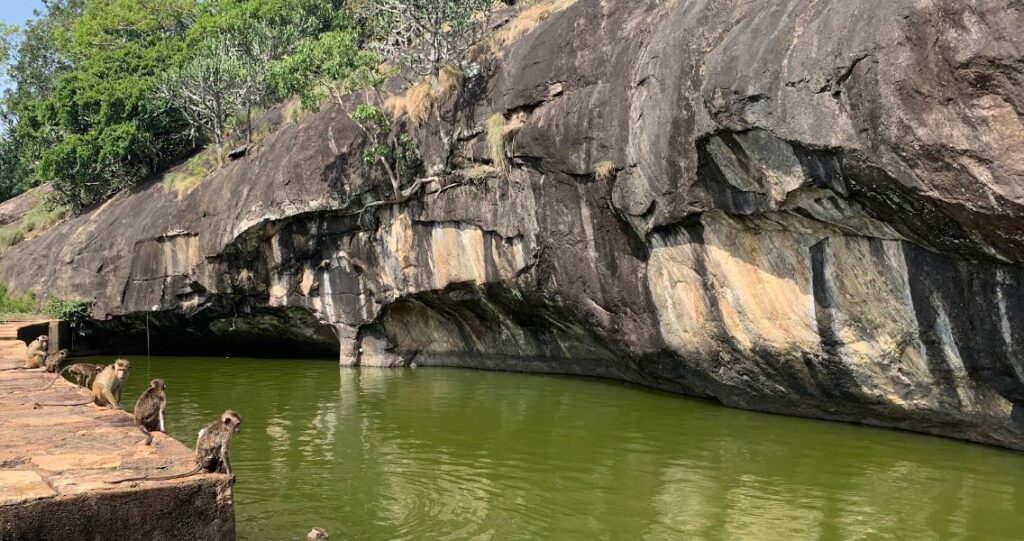
- Ambasthala Dagoba (Mango Tree Stupa)
Situated in the middle of the Mihintale complex, this tiny white stupa is meant to mark the precise spot of the Mahinda-Devanampiyatissa meeting. The stupa is enveloped by ruins of monastic buildings and beautifully crafted pillars. A statue of Mahinda Thera stands nearby, adding a personal touch to this ancient tale.

- Mihintale Maha Seya
This great stupa was built by King Mahadathika Mahanaga in the 1st century BCE. It is supposed to hold relics of the Buddha and is one of the most revered stupas in the area. Its huge white dome shines in the Sri Lankan sun, rising above the landscape and drawing the faithful from afar. - Kantaka Cetiya
The Kantaka Cetiya is one of the oldest stupas in Mihintale, dating from the 2nd century BCE. What makes it unique is that it has four richly decorated frontispieces, bearing carvings of dwarfs, elephants, lions, and flowers. These decorations are typical of early Sinhalese art and devotion. - The Ancient Hospital
One of the most fascinating finds at Mihintale is the remains of what is believed to be the world’s oldest hospital. Built during the reign of King Sena II in the 9th century, it has medicinal baths and rooms for patients. The discovery showcases the Buddhist emphasis on compassion, healing, and public welfare.
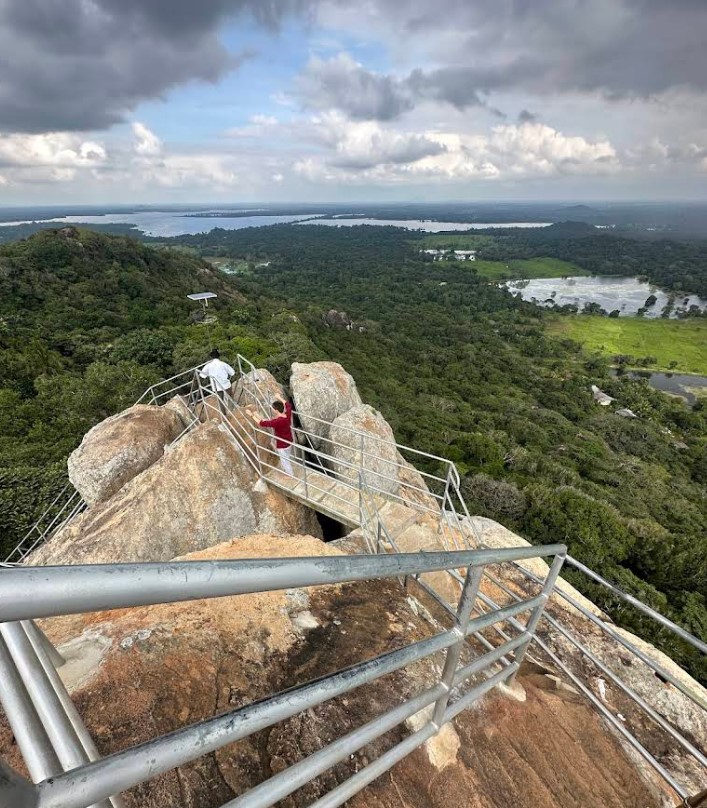
Architecture and Art
The ruins at Mihintale demonstrate the architectural ingenuity of the early Sinhalese culture. The rock-cut inscriptions, stone steps, ponds, and pavilions all bear witness to a culture firmly committed to spirituality and community. The use of symmetry, attention to elevation and flow of space, and solid craftsmanship have allowed many of the structures to withstand the test of time.
Aside from its architecture, Mihintale also has important Brahmi inscriptions, some of the earliest Sinhala written records. The inscriptions provide details on monastic discipline, donations by royalty, and the organization of the Buddhist clergy.
Mihintale in the Modern Era
Mihintale is conserved today by both the Sri Lankan government and Buddhist monastic orders. Conservation work is ongoing to protect the ancient monuments while continuing to permit the steady stream of pilgrims and tourists. It is a major boost to Sri Lanka’s religious tourism sector, sustaining both cultural heritage and local economies.
Despite modernization, Mihintale still has an aura of sanctity. It is a testament to how religion, politics, and culture have been intertwined in Sri Lanka for two thousand years. It continues to inspire students of history, architecture, and peace seekers alike.
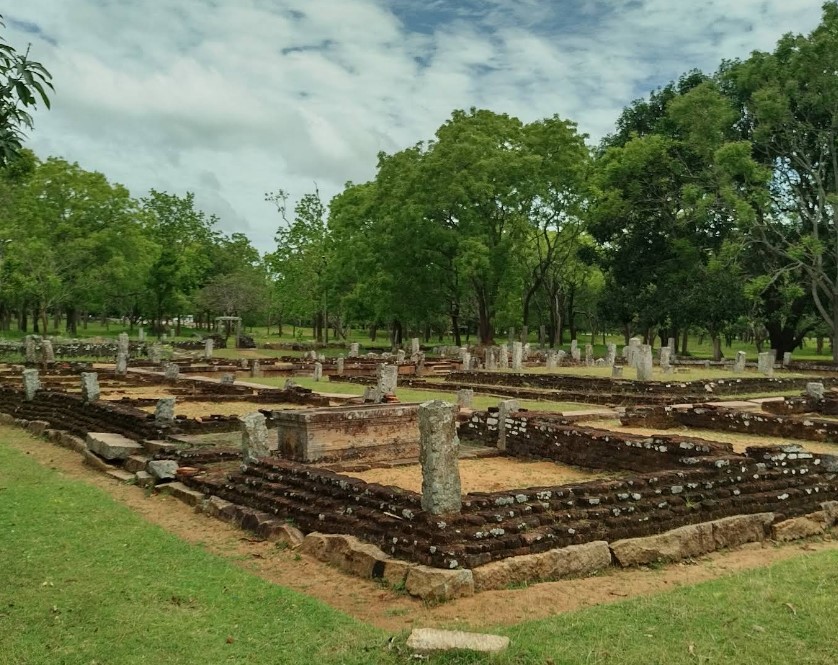
Mihintale is not merely an old hilltop; it is a religious testament to the soul of a nation. From its mythical beginnings to its present status as a pilgrimage site, it encapsulates the essence of Sri Lanka’s Buddhist tradition. To walk Mihintale is to tread through time every rock vibrating with the chants of the past, every stupa glowing with timeless devotion
As the cradle of Buddhism in Sri Lanka, Mihintale is a shining star of faith, wisdom, and peace. It is a place where history is not only alive in the ruins and remnants, but in the hearts of individuals who still ascend its sacred steps, generation upon generation.
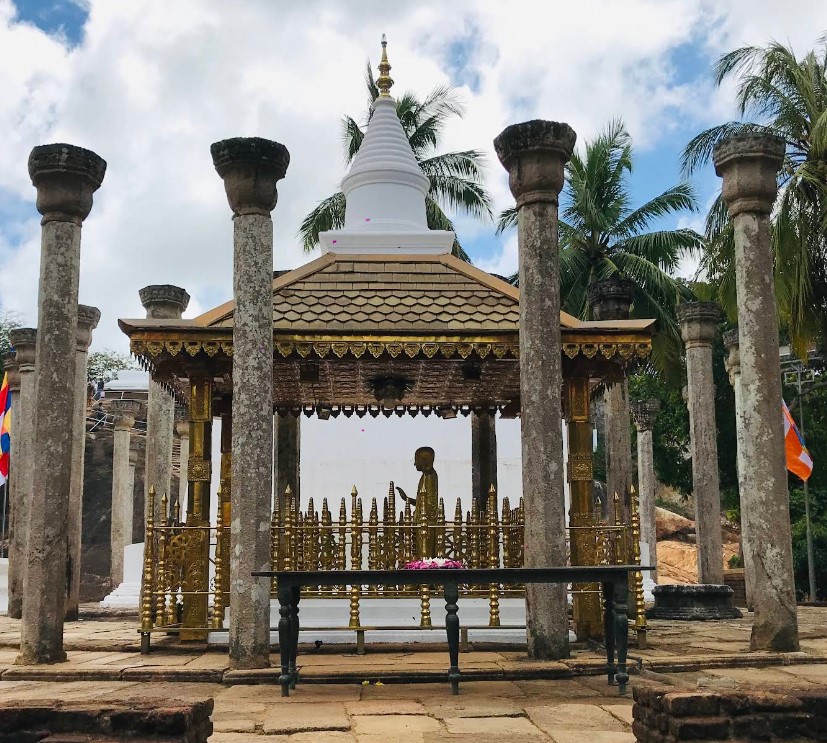
By Car or Taxi
- From Anuradhapura:
- Distance: ~15 km
- Travel Time: 20–30 minutes
- Route: Take the A12 road east from Anuradhapura, then turn onto the Mihintale Road. The route is well-signposted.
- Taxis or tuk-tuks are available from Anuradhapura. Tuk-tuks are cheaper but slower.
- From Colombo:
- Distance: ~220 km
- Travel Time: 4.5 to 5.5 hours
- Route: Take the A1 highway north to Kurunegala, then the A28 to Anuradhapura, and follow signs to Mihintale.
By Bus
- From Anuradhapura Bus Station:
- Direct buses run frequently to Mihintale, especially during the day.
- Bus fare is cheap (around Rs. 50–100).
- The ride takes about 30–40 minutes.
- From Colombo:
- Take a long-distance bus to Anuradhapura (6–7 hours), then transfer to a local bus or tuk-tuk to reach Mihintale.
By Train
- To Anuradhapura Railway Station:
- Regular trains run from Colombo Fort to Anuradhapura on the Northern Line.
- Travel time: 4–6 hours depending on the train type.
- Once in Anuradhapura, you’ll need to take a bus or tuk-tuk to Mihintale.
On Foot / By Bike (From Anuradhapura)
- For the adventurous, you can rent a bicycle in Anuradhapura and ride to Mihintale. It’s a scenic and pleasant route, especially early in the morning or late afternoon.
- Cycling takes about 1 to 1.5 hours.
Tips for Visiting Mihintale
- Best Time to Visit: Early morning or late afternoon to avoid midday heat.
- Dress Code: Wear modest clothing (shoulders and knees covered) out of respect for the sacred site.
- Footwear: You’ll need to remove shoes at religious areas, so bring socks if the ground is hot.
- Water & Snacks: Carry water, especially if you’re climbing the rock or visiting in hot weather.
